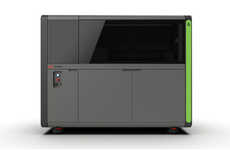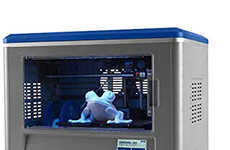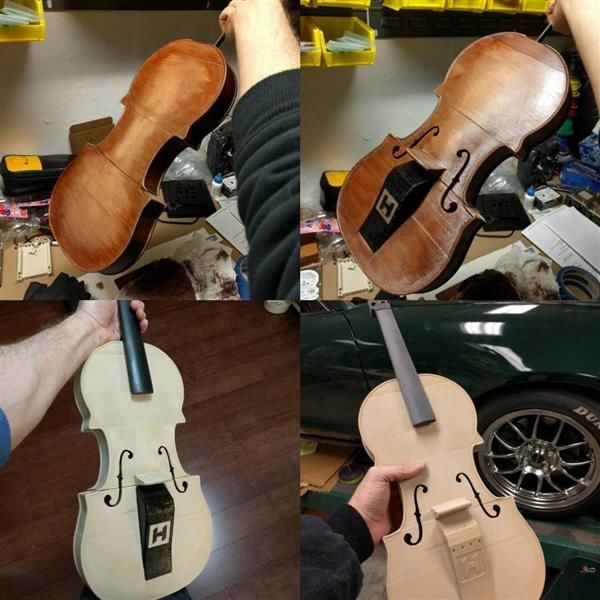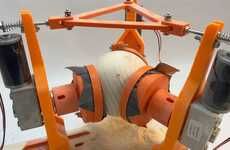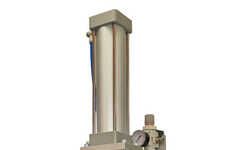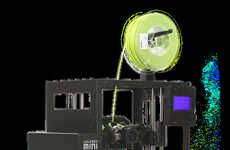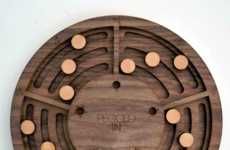
This 3D-Printed Acoustic Violin was Created Using Wood Filament
Michael Hemsworth — May 4, 2016 — Art & Design
Using only a MendelMax 3D printer, Andrew Murrell created an acoustic violin that is fully capable of being played and looks just like the real thing.
3D printing instruments can be a difficult task that requires professional-grade 3D printer equipment. However, this creation by Murrell is rather impressive and features a finished aesthetic that looks just like a classically made violin.
The acoustic violin was created using the above-mentioned 3D printer and ROBO3D Wood PLA filament to create the body of the instrument. Murrell utilized the files made available by Matt Hova to create the violin, which took about 30-hours of printing in order to accomplish. It marks one of the finest efforts in creating an instrument at-home, using hobby-grade equipment, that's comparable to other professional examples.
3D printing instruments can be a difficult task that requires professional-grade 3D printer equipment. However, this creation by Murrell is rather impressive and features a finished aesthetic that looks just like a classically made violin.
The acoustic violin was created using the above-mentioned 3D printer and ROBO3D Wood PLA filament to create the body of the instrument. Murrell utilized the files made available by Matt Hova to create the violin, which took about 30-hours of printing in order to accomplish. It marks one of the finest efforts in creating an instrument at-home, using hobby-grade equipment, that's comparable to other professional examples.
Trend Themes
1. 3d-printed Instruments - Advancements in 3D printing technology enable the creation of intricate musical instruments at home.
2. At-home Instrument Creation - The ability for hobbyists to create high-quality instruments using accessible technology disrupts traditional instrument manufacturing.
3. Wood Filament Printing - Innovations in printing materials, such as ROBO3D Wood PLA filament, allow for the creation of wooden musical instruments with a 3D printer.
Industry Implications
1. Musical Instrument Manufacturing - Traditional manufacturers may face competition from hobbyists utilizing accessible technology to create their own high-quality instruments.
2. 3D Printing Technology - As 3D printing technology continues to advance and become more accessible, it has the potential to disrupt multiple industries, including instrument manufacturing.
3. Hobbyist/self-made Instrument Market - The ability to create high-quality instruments at home may disrupt the traditional market for professional and even beginner-level instruments.
1.8
Score
Popularity
Activity
Freshness


